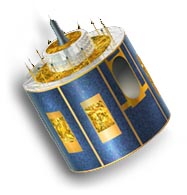Project

Meteosat Second Generation (MSG)
Abstract
Meteosat Second Generation is operated by EUMETSAT and provides almost continuous images to meteorologists and researchers in Europe and around the world. It incorporates significant enhancements in frequency and resolution to the previous generation of Meteosat. MSG measures in 12 spectral channels (compared to only 3 on the previous Meteosat) and records data in a 15 minute cycle (30 minutes on the previous Meteosat). The resolution of the high-resolution visible light channel measures 1 km at the sub-satellite point (compared to 2.5 km on the previous Meteosat).
The first Meteosat Second Generation satellite, MSG-1, came into operational service on 29th January 2004 and was renamed Meteosat-8. MSG-1 has a nominal lifetime of seven years. MSG-2 was launched on 21st December 2005 and future MSG units are planned.
The MSG payload also contains the Geostationary Earth Radiation Budget (GERB) instrument which provides important data for climate research. Data from the GERB instrument is now available at the BADC.
A humanitarian Search and Rescue transponder that relays distress signals from ships, aircraft and others in need of rescue is also mounted on the MSG platform.
Details
| Keywords: | MSG, Visible, Infra-Red, meteorology |
|---|---|
| Previously used record identifiers: |
http://badc.nerc.ac.uk/view/badc.nerc.ac.uk__ATOM__activity_activity_msg
|
